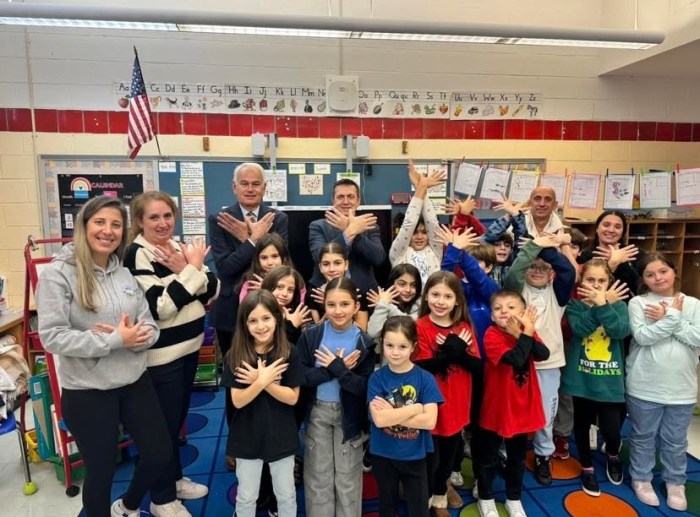By Gary Buiso
A pigeon’s life must not be easy—especially in Brooklyn. Traffic, an uncertain food supply and occasional disdain from the public all contribute to the stressful lives of our fat, feathered ‘friends.’ To add to their bird brain woes, they also make a fine meal for a hungry hawk. Just ask Eustace Greaves, Jr., an eagle-eyed, quick-thinking insurance broker, who was an eyewitness to a rare urban scene that he captured with his camera. The photos show the beauty and brutality of nature, played out on a Midwood street. Greaves, on his way to his Vanderbilt Avenue office with his 12-year-old daughter Ashley, was warming up his car when the scene unfurled. He described the pigeon’s last moments on Campus Road and East 21st Street. “This pigeon was bopping along, out for a Sunday stroll, and next thing you know, boom!” Greaves said. “This giant hawk was standing right on top of him, using his talons to kill the pigeon,” he continued. “My daughter said, ‘Look Daddy, he’s tenderizing that bird!’” Greaves recalled. Greaves and Ashley tried to take photos with their cell phones, to no avail, as the picture quality was rather low. But Greaves said he never leaves home without a proper camera, so he quickly went to the trunk of his car to retrieve it. He then inched closer to the grim scene. “That bird kept looking at me—he had no fear at all. He kept tenderizing his prey.” From about ten feet away, Greaves started snapping pictures, capturing the hawk chowing on the pigeon, blood soaking its impressive beak. “You talk about shaking with excitement—just to see this magnificent creature doing what God intended it to do.” As the hawk dined on squab, Greaves recalled hearing the screeching of monk parrots—known to nest in the area—providing a chilling soundtrack for an otherwise mundane Sunday morning. But as suddenly as the raptor appeared, it flew off, Greaves said. Greaves, a former Boy Ccout who grew up in Bedford-Stuyvesant and Bushwick, said this was the first hawk he’s seen in Brooklyn. The birds though, are not as rare as one might think. Shown the photo, Paul Sweet, the collections manager of the Department of Ornithology at the American Museum of Natural History, identified the bird as a Cooper’s hawk, a medium-sized hawk known for hunting other birds. Sweet, a Park Slope resident, said Cooper’s hawks typically nest in woodlands, and are fairly common in the northeast. With their long tails, they are specialized for maneuvering through trees—or buildings—to capture other birds,” he said. “They only come to the city in the winter,” he said. According to the Cornell Lab of Ornithology, adult Cooper’s hawks stand 20 inches tall and can have a wingspan of 35 inches. They capture their prey with their feet, squeezing it to death. Their numbers declined in the 1940s and 1950s, most likely due to the poisonous effects of DDT and pesticide contamination. The bird now appears to be breeding in urban areas, which may help increase their numbers, according to Cornell website. Don Riepe, the Jamaica Bay guardian, confirmed the identification, which can be tricky as Cooper’s closely resemble sharp-shinned hawks. Riepe manages nest sites for hawks and owls in the city and helps band these birds for identification purposes each summer in Jamaica Bay. Other raptors that can be found in Brooklyn are the red-tailed hawks, peregrine falcons, which nest under bridges, the merlin (a type of falcon), American kestrel, and the osprey, a fish-eating hawk, Riepe said. “Then there are the owls…and the occasional bald eagle,” he noted. David Franz, a biology professor at Brooklyn College, said the hawk could have been passing through the neighborhood. “They will often hang around if there’s a good food supply.” Aside from other birds, Cooper’s hawks will also eat small mammals, such as squirrels and mice, as well as reptiles and amphibians. “They are wonderful to have around,” Franz said. “We have too many pigeons and too many rats. We don’t have too many hawks,” he said. “They help cut down the vermin,” he added. “They’re a species we should be pleased to have attracted to the city.” The Cooper’s hawk certainly left an impression on Greaves’ daughter. “Now when she gets out of the car…she looks up,” her father said.
































